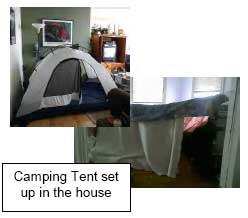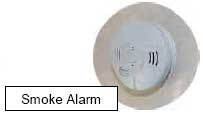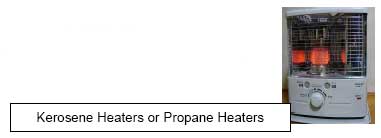Why This Is Important
In the cold months, keeping warm will be more than a matter of comfort: it will be a matter of survival.
The Problem: Heat may not be available. Critical infrastructure is at risk in a pandemic. This includes power generating plants, refineries for heating oil, natural gas facilities, coal mining, and transportation systems. The people who work at these facilities will also be sick.
"The mounting risk of a worldwide influenza pandemic poses numerous potentially devastating consequences for critical infrastructure in the United States. A pandemic will likely reduce dramatically the number of available workers in all sectors, and significantly disrupt the movement of people and goods, which will threaten essential services and operations within the nation's critical infrastructure/key resource sectors."
Department of Homeland Security, "Pandemic Influenza: Guide for Critical Infrastructure and Key Resources," (April 2007) |
If Utilities Fail, Don't Try to Heat The Entire House
- Insulate one room in your house for a "shelter within the house."

- Pitch a tent in the warmest room. Tent alternative: Use your dining room table (extra leaves in). Place a mattress underneath it, and drape blankets, rugs etc. down the sides. Leave a gap near the bottom for fresh air. Keep tent or blankets away from any fire source.
- Insulate doorways, floors, walls and windows: Use extra blankets, rugs, curtains, mattresses, clothes or newspapers.
- Place sleeping bags inside your tent.
- Bring stored water into this room to keep it from freezing.
- Safety precautions - bring the following to the insulated room:

- Battery-operated smoke alarm
- Battery-operated carbon monoxide detector
- Any fire extinguishers
- Disaster supply kit (72-hour kit) in case of evacuation
- Insulate your body

- Wear a hat/cap indoors and outdoors.
- Wear loose clothes, in layers.
- Keep clothes clean and dry.
- If needed, stuff newspapers around legs, arms and chest.
- If needed, use garbage bags for feet or over body, stuffed with insulative materials.
- Wear thermal underwear.
- Fireplaces and Woodstoves. If you have a working fireplace in your home, it can provide emergency heat. Heat circulating or "heatilator" fireplaces are much more efficient than conventional masonry fireplaces. Burn only safe woods or logs. Service your fireplace/woodstove annually.

- Do NOT burn pressure-treated wood, as it contains toxins that could make you sick. Artificial logs (made from sawdust and wax) should only be burned one at a time.
- Do NOT burn newspapers or other trash, as they burn very hot, and can cause a chimney fire.

- Other heat sources.The emergency cooking heat sources discussed for indoor use in Food, can be used to provide heat. Propane heaters approved for indoor use can also be used. Turn these off before going to sleep.
- WARNING for using any indoor alternate heating ideas:

- Provide ventilation with a window or door opened one inch, with the heater placed close to this opening.
- Place all open-flame emergency heaters on a fireproof surface.
Minimizing Frozen Plumbing
If there is no heat and the temperature is expected to go below freezing (32 degrees F or 0 degrees C) you must take steps to keep the water in your pipes from freezing.
Water expands when it freezes, and may crack your pipes. You will not be able to have running water if the pipes are frozen, and when they thaw, if there is a crack, you will have a very big leak and will need to turn off the water until the leak is fixed, which may take a long time.
Any pipe exposed to severe cold may freeze; but in a power outage, pipes that usually are fine may also freeze because there is no heat, such as in a basement or crawl space, attic, garage, in the kitchen cabinets, or pipes that go through exterior walls with little insulation.
Use the following steps to protect your plumbing if the temperature is expected to go below freezing.
- Turn on faucets and collect any water.
- Open cupboard doors under sinks.
- Open any other drain valves and collect water.
- Turn off the main water valve into the house if possible.
- Turn off and drain the hot water tank through the drain valve at the bottom of the tank. (It has a connection for a hose, and this water should be saved). Turn off the hot water heater when you are going to drain it. If left on and empty, it will burn up the heating system in the tank. Put a note at the switch or circuit breaker:
| Refill tank BEFORE turning back on |
- Pour car windshield washer anti-freeze in the sinks and toilet to protect the gooseneck traps and prevent odor from entering the house.
- Washing machine: Pour a quart of car windshield washer anti-freeze in the washing machine and set the button to pump it out just a second. This gets it through the tubes and pump underneath.
- Move stored water to the warmest room, if possible. If not practical, make sure containers have enough room for expansion, if the water freezes.
For more information on preventing and thawing frozen pipes, go to
Preventing and Thawing Frozen Pipes at the official American Red Cross Web site.